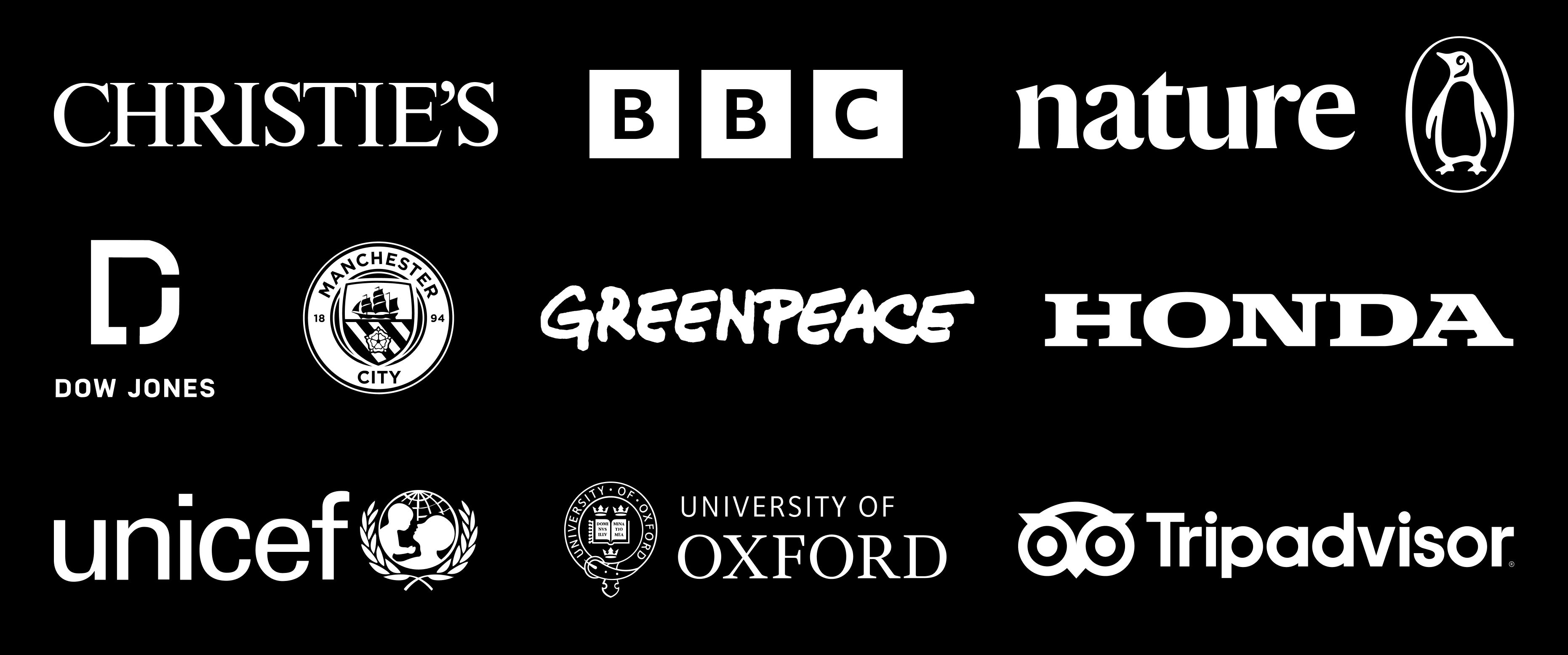What is a TIFF file?

Welcome to this introductory guide to the TIFF file format! A TIFF file is a type of raster image format (or bitmap format) that typically uses lossless compression to store images.
This format is popular among photographers and graphic designers because it can store high-quality images while preserving detail and colour. However, TIFF files can be very large, which can make them difficult to share or transfer.
In this guide, we’ll give you everything you need to know to sound authoritative in front of your designers, developers, colleagues, or sceptical family members.
Specifically, we’ll cover:
- A detailed introduction to TIFF file
- A brief history of the TIFF file
- How to use a TIFF file
- Common uses for TIFF files
- Benefits and downsides of TIFF files
- TIFF FAQs
Let’s go!
Start creating with Shorthand
It's the fastest way to publish beautifully engaging digital magazines, reports, internal comms, and more.
Loved by the world's most iconic brands
Loved by the world's most iconic brands
What is a TIFF file?

A TIFF (tagged image file format) is a graphic file format used for images, identified by its .tif file extension. TIFF is a raster format, meaning that it is comprised of pixels (unlike vector images, which use mathematical formulas).
TIFF files can be lossless, meaning that no image data is lost when the file is compressed, or lossy, meaning that some data is lost. The file format also supports multiple layers and transparency. TIFF files can be edited and resaved without losing quality, making them ideal for graphic designers and photographers.
Though TIFF images are typically high quality, they can also be quite large, which can make them cumbersome to work with. They are also not typically supported by web browsers. For this reason, JPEG is often a better image type for images that will be posted online or used in documents.
You can read more about the technical specifications for TIFF files in the excellent and very detailed Wikipedia article.
Learn more about other types of image file formats.
A brief history of the TIFF file

The history of the TIFF file format dates back to the early days of digital photography. In the early 1980s, a company called Aldus Corporation developed a file format for scanned images that could be used on both Macintosh and IBM PCs. This format was called Tagged Image File Format, or TIFF.
TIFF quickly became the standard format for storing and exchanging images among photographers and graphic designers, and was commonly used in the early days of ‘desktop publishing’. Aldus eventually merged with Adobe Systems, who held the patent on the format from then on.
Today, TIFF files are still widely used in the printing and publishing industry. They are also commonly used by photographers and graphic designers.
How to use a TIFF file

How to open a TIFF file
If you just want to view the images in a TIFF file, you can use any standard image viewer for your operating system — even the one built into your web browser. If you are using a Microsoft Windows computer, you can open the file by double-clicking on it. If you are using Mac OS, you can open the file by clicking on it once to select it and then pressing the return key. If you need more functionality, you can also open the file using a program like Adobe Photoshop.
The only proviso that some TIFF files can be very large, and not all apps will be well suited to presenting very large files.
How to edit a TIFF file
To edit a TIFF file, you will need a program that supports TIFF files. If you are using a Windows computer, you can use Adobe Photoshop or PaintShop Pro. If you are using a Mac, you can use Adobe Photoshop or Preview.
Once you have opened the file, you can make any changes you want. Be sure to save the file when you are done editing it.
How to create a TIFF file
There are two ways to create a TIFF file: by converting another type of image file into a TIFF, or by saving an image as a TIFF in an image editing program. To convert an image into a TIFF, you can use an online converter or a desktop program like Photoshop,
How to compress a TIFF file
When saving a TIFF file, you can choose the level of compression, which will affect the file size. If you plan to edit the image or print it at a high resolution, choose a lossless compression option. If the image will be used on the web or emailed, choose a lossy compression option to reduce the file size.
The standard compression for TIFF files is .LZW. The LZW algorithm avoids any loss of image quality during compression, but LZW isn’t as widely supported as other forms of compression.
Another way to compress a TIFF file is to use the JPEG format to save a copy of the image as a JPEG file. This will reduce the file size, but it may also reduce the quality of the image.
Common uses for TIFF files

TIFF files are commonly used by photographers and graphic designers, as they offer lossless compression and high-quality printing. TIFFs are also be used for archiving, as they won't degrade over time like some other image file types can.
TIFF files are also used in professions like GIS for high resolution aerial imagery, including satellite imagery. The related ‘GeoTIFF' format allows for geospatial metadata (such as GPS coordinates).
The benefits of TIFF files

They can be lossless
TIFFs can be lossless, meaning no data is lost when the file is compressed. However, because no information is discarded during compression, TIFF files tend to be much larger than lossy formats like JPEGs. For many applications, this isn't an issue, but it's something to keep in mind when deciding which format to use.
They support multiple layers and transparency
A layer is one of the building blocks of an image, and they allow you to work on one element of an image without affecting the others. For example, you can put a base colour on one layer, and then add shadows and highlights on separate layers.
This allows you to change the order of the layers, or turn them off entirely, without affecting the rest of the image. Layers also make it easy to apply different effects to different parts of an image, such as blurring the background while keeping the foreground sharp.
This makes TIFFs an ideal format for storing complex images, such as those used in graphics and photograph.
They are widely used in the printing and publishing industry
TIFF files are lossless, meaning that they do not suffer from any data loss when they are compressed. This makes them ideal for high-quality printing, as there is no risk of losing any detail or quality in the image. They can also store images as a grayscale, CMYK, or coloured RGB image, which is critical for printing.
The downsides of TIFF files

TIFF files are typically large in size
The flip-side to the many benefits of TIFF files is their size. TIFF files are typically much larger than comparable JPEG or PNG files. There are several reasons for this.
TIFF files can support multiple layers and transparency, which allows for more editing flexibility but also results in a larger file size.
Second, TIFF files are lossless, meaning that no data is lost when the file is compressed. This is important for professional photographers who need to maintain the highest possible quality, but it also means that TIFFs can be quite large.
For most users, JPEG or PNG files will be sufficient. However, for those who need the highest quality or who need to edit images extensively, TIFFs may be the best option even though they are larger.
TIFFs are not typically supported by web browsers
Web browsers do not typically support the TIFF file format. In order to view a TIFF file in a web browser, it must first be converted to another file format, such as JPEG or PNG.
While this may seem like a hassle, it actually provides some advantages. For example, JPEG and PNG files are much smaller than TIFF files, so they load faster in web browsers. Additionally, JPEG and PNG files can be compressed more than TIFF files, so they take up less storage space.
Frequently asked questions about TIFF files

What are the differences between a TIFF and a JPEG?
TIFF files are typically uncompressed, so they are larger in size than JPEG files (or JPG files). However, this also means that they have higher quality images. JPEG compression means that they typically take up less space but the image quality is not as good.
Another difference is that TIFF files support layers, whereas JPEG files do not. This means that you can edit a TIFF file and change the order of the layers, whereas with a JPEG file you can only edit the image as a whole.
Finally, TIFF files use the RGB color model, whereas JPEG files use the CMYK colour model. This means that when you print a JPEG file, the colours will not be as accurate as they would be if you printed a TIFF file. However, CMYK files are usually smaller in size than RGB files, so it is up to you to decide which is more important to you.
What are the differences between a TIFF and a PNG?
TIFF files are generally larger than PNG files, but they offer more features and can store more information. TIFF files are also considered more reliable than PNG files, and are less likely to suffer from compression artifacts.
The main advantage of TIFF files is that they can be edited and re-saved without losing any quality. This makes them ideal for storing images that need to be edited, such as photographs.
TIFF files also support multiple layers and transparency, making them convenient for web design and graphic design.
PNG files, on the other hand, are smaller and more efficient. They are also easier to work with, since they don't require special software to view or edit them.
PNG files are ideal for storing images that don't need to be edited, such as logos or illustrations. They are also good for sharing images online, since they load faster than TIFF files.
Should I use a TIFF or a PDF for printing?
When it comes to printing, there are a few things to keep in mind. First, TIFF files are typically larger than PDF files, so they may take up more space on your printer's memory. Second, PDF files are often more compressed than TIFF files, so they may print faster.
However, there are some benefits to using TIFF files instead of PDFs. For one, TIFF files support transparency and layers, which can be useful for printing complex designs. Additionally, TIFF files are less likely to suffer from compression artifacts than PDFs.
Ultimately, the decision of whether to use a TIFF or PDF file depends on your needs and preferences. If you need a higher quality image or if you need to print a complex design, then a TIFF file is probably the better option. If you want a smaller file size or if you need to print quickly, then a PDF file is probably the better choice.
Start creating with Shorthand
It's the fastest way to publish beautifully engaging digital magazines, reports, internal comms, and more.



